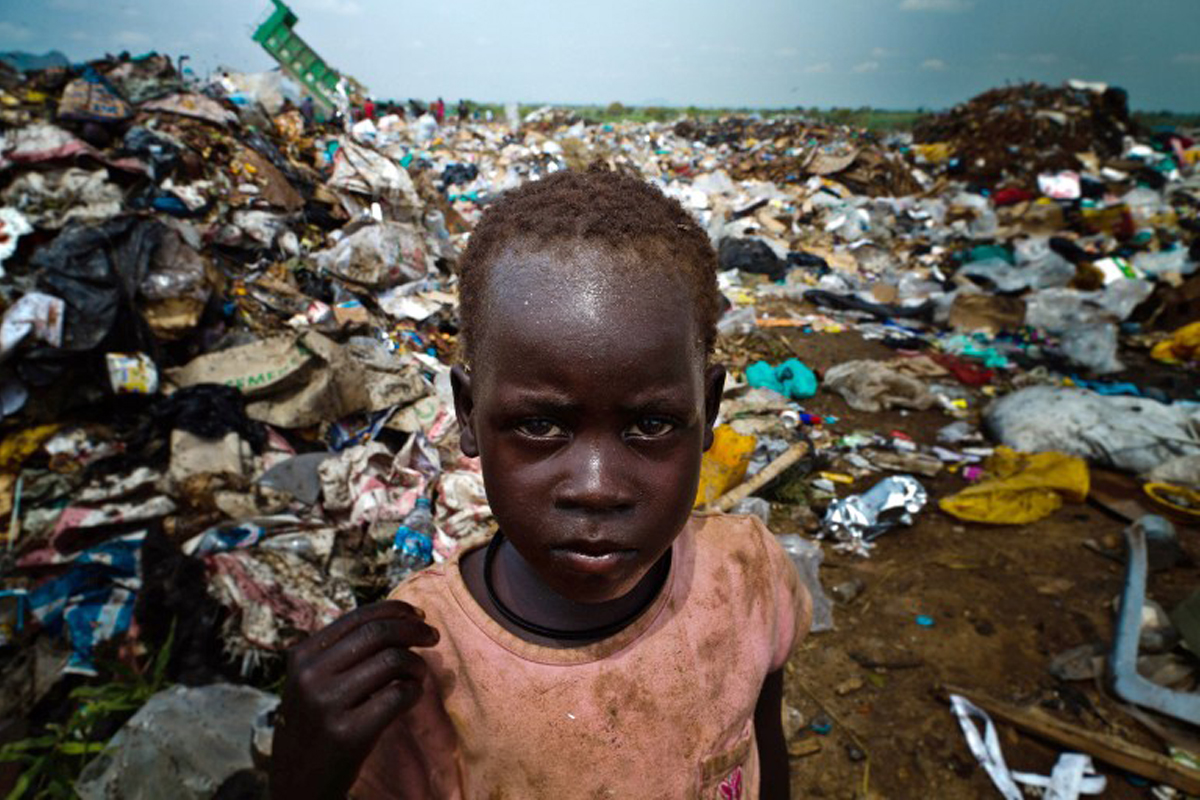
The repercussions of the April War: an increasing poverty rate, a phenomenon in search of eradication
Abdulrahman Al-Ajab
The devastating April War, which has entered its sixth month, has created a new reality in Sudan due to the displacement, migration, and refugee situations caused by the war. According to United Nations statistics, Sudan now has the highest number of internally displaced persons in the world, estimated at 7.1 million people. These outcomes, along with the economic and social transformations that occurred in Sudanese society before the war due to the faulty economic policies of the defunct Salvation regime, have led to an increase in the poverty rate in Sudan.
The war that erupted on April 15 between the army and the Rapid Support Forces in Khartoum has expanded to include nine states: (Khartoum, North and West Kordofan, and the states of South, North, Central, and West Darfur), in addition to the states of Blue Nile and South Kordofan. The war has caused displacement and impoverishment of a large number of citizens in these states.
The Central Bureau of Statistics, the institution responsible for extracting the poverty rate, has intentionally or unintentionally failed to extract an accurate rate for the phenomenon. This has caused conflicting figures about the actual rate over the years, especially since there are unofficial numbers mentioned. In this context, the Sudanese Strategic Report, issued by the Center for Strategic Studies in 1997, indicated that the poverty rate in Sudan reached 94% of the total population.
While all reports and follow-ups confirm the widening poverty gap, what is noteworthy is that statistics on the level of poverty in Sudan are still conflicting and unclear, causing controversy among experts. In this context, United Nations reports indicate that 46.5% of the population in Sudan lives below the poverty line. In contrast, a government study conducted in 2017 stated that poverty had declined to 36.1%.
However, economic experts believe that the poverty rate in Sudan reaches up to 80% according to the countrys economic reality, which has been confirmed by several economic experts. They attributed this to the decline in production rates, imbalances, migration from rural areas to cities, and the exacerbation of unemployment, which is confirmed by the increasing emigration abroad in large numbers.
The Ministry of Social Security during the Salvation regime era confirmed that the poverty rate in Sudan reached 46.6% according to the scientific definition of poverty. This percentage was obtained through a true and scientific survey conducted by the ministry in the previous period. Thus, it can be said that the poverty rate in Sudan ranges between 46% and 94%.
A previous report by the Zakat Bureau stated that the percentage of those who accept zakat from the poor in Sudan reaches 46%, which represents a rate of (3-1000). However, zakat money often does not go to the deserving poor and needy. Instead, it often goes to other banks, and sometimes to projects unrelated to zakat banks. Despite this, zakat has contributed to supporting the poor and needy and addressing their problems. However, this has now stopped due to the weak revenues and collections in the states currently affected by war.
Previous official data indicated that the unemployment rate in Sudan had risen to 19%, with youth unemployment at about 34%, graduates at 48%, and women at 45%, according to previous official reports. A government study predicted a continuous increase in the rates of graduates due to the continuous expansion in higher education institutions, while there is only modest growth in the annual absorption rates of public sector jobs.
The reality created by the devastating April War confirms the deterioration of the living conditions, with large segments of society falling into poverty, lack of job opportunities, and university graduates, civil service employees, and the private sector being forced to work in marginal professions.
According to experts, one of the main reasons for the spread of poverty in Sudan is the continuous failure of macroeconomic policies, especially the economic liberalization policy adopted by the state since the early 1990s. Other factors include natural disasters such as droughts, desertification, and floods, recurring civil wars and political instability, migration of productive rural residents to major cities and urban centers, corruption in administration and governing bodies, lack of transparency and accountability, and the failure of agricultural policies due to irrigation problems, rising production costs, and farmer insolvency.
Numbers from old statistics indicate that 70% of the countrys monetary wealth is located in Khartoum, the capital, and that only about 5% of citizens own more than 80% of that wealth. This may be accompanied by an increase in the prices of basic services such as electricity, water, healthcare, and education, which have seen an unusual increase in recent years, often exceeding 100%. This is in addition to the increase in prices of essential and consumer goods, while there has been no commensurate increase in salaries in the public sector and the private sector.
To combat poverty, some experts believe that principles of social justice must prevail in all sectors of Sudanese society. This will only be achieved by not fully relying on structural economic policies, which see poverty as an exceptional thing that can be addressed emergently by creating entities for this purpose. This should take into account the human aspects, the interests of the weak before the rich, which is the real dimension for the continuity of society, according to some sociologists who have called on the state to conduct more in-depth and field studies among poor groups, conduct social studies that clarify the conditions they live in and the difficulties they face, the means they use to face these conditions, as well as the impact of social poverty on them and the real results of their support fund policies. This would make the state more scientifically capable of analyzing the social situation more deeply.


